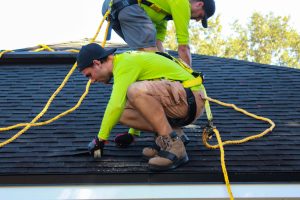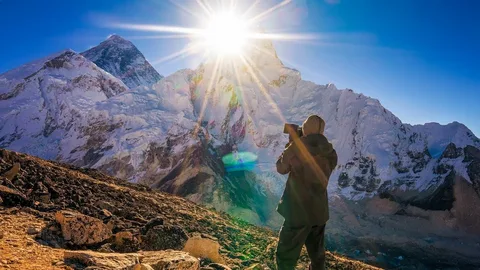Everest base camp trekking is one of the best treks of a lifetime, you will never stop talking about, and it is the No.1 trek in Nepal. But, just like any significant journey, there is a cost — and that can be scary if you haven’t prepared for it. And it’s super important for you to budget for Everest Base Camp – you want to have enough money for there’s things you want to do but also so that you can use that money intelligently and have a say in what you spend it on so that you get the most from your experience without adding any more stress to an already overwhelming experience.
Whether that’s flights, or gear, or permits (or anything in between), getting a handle on just how deep and wide those costs go is a great way to position yourself to start making plans for realities. Keep reading to see a front-to-back breakdown of what you need to budget for a trip to Everest Base Camp – provided that you’re a solo traveller like I was, that is.
Getting There: Flights and Transportation
The first part of your adventure to Everest Base Camp starts with arriving in Nepal, as most trekkers fly into the Tribhuvan worldwide Airport in Kathmandu. Sliding candidates from North America, Europe, or Australia could have international fares of $600-$1,2, depending on the season and booking boost, given an arrival of at least 10 days out. You can do better if you book a couple of months out.
You’ll also need to buy a domestic flight between Kathmandu and the city of Lukla, the place to begin your trek. Those flights have a fast-paced, churning runway and cost around $150 to $220 one way. Like airfares, charges rise and fall based on demand and weather, so the key phrases are flexibility and early reserving.
Overland is also an option, but it’s waaaaay longer and it’s very complicated, and can certainly add post-days and cost for sure.
Permits and Fees
Mount Everest Base Camp Tour Permits are mandatory, and wexceptthe Everest Region, they are readily checked. The two main permits are the Sagarmatha National Park Permit (approx $35-$ for the permit) and the TIMS Card (Trekkers’ Information Management System), which will be an additional $20 or so. The fees benefit conservation and local communities.
The permit cost is usually included in the package price of your trekking company; however, if you are doing things independently, remember you will have to pay for them.
Trail Accommodations and Food
Accommodation is available in tea houses and lodges, and while the accommodation is basic, you will be comfortable. Altitude equals more cost because it’s tough to get supplies and everything up there. Accommodations may be as inexpensive as $3 to $5 a night up high earlier on, and $10 to $20 or more down around Base Camp.
Food is also pricier as you ascend. A fundamental breakfast or dinner ought to cost anywhere from $ $5 to $10, and snacks and warm liquids like tea or instant coffee normally price around $1 to $3. So, assuming you do the hike in 12 to 14 days, that is the common daily amount you’ll spend on meals and accommodations: say abetween$20 $30 (though many trekkers get through with much less than that if they’re bedding down in simpler accommodations).
Guide and Porter Services
It’s a good idea to take a guide and a porter if it’s your first high-altitude trek in Nepal. It’s also safer with a guide, who will sort out the logistics so you get more return for your experience in the way of local knowledge. A porter does what his name suggests: He carries stuff so that you can walk or roam free, unencumbered.
Guides typically earn $25 to $35 a day, more than the porters, who average $15 to $20. Tips (usually 10-15 percent of the service fee) are always appreciated and included in the package. Be prepared for $500 to $700 total per person for a two-week trek.
Gear and Equipment
A decent kit is a must for comfort and safety. It’s also something that can be one of the most expensive up front if you don’t already have the tools. It’s serious money for good trekking shoes, down jackets, bags for frigid weather, backpacks, layers — it adds up.
Some of the gear is available cheaply in Kathmandu, but only if you’re prepared to haggle, and if you’re caught in some pretty bad weather, the bad gear can let you down. Figure on $300 to $800 for your essentials, not counting the gear you might have to buy.
Travel Insurance
And don’t forget travel insurance — in particular, the kind that includes high-altitude trekking and emergency evacuation. There is no easy escape from the Everest Base Camp, and insurance is your financial foundation.
This depends on what you purchase, but as a rough ballpark figure, you can expect to spend from around $100 to $200 for decent coverage, depending on price, health, age, and how long you will be gone.
Miscellaneous Expenses
Additional potential costs may or may not be tips for guides and porters, Wi-Fi in tea houses, hot showers (these can cost a couple of dollars and up to more than $5), Laundry, and token souvenirs. So you throw another $100 to $200 or so in your bag, just to be prepared and stupid.
How to Budget Like a Boss
Budgeting does not need to make a hole in your budget. You would save hundreds of Pounds by booking your flights and hotels early. If you can manage it, come in the spring and fall shoulder seasons—when prices aren’t through the roof and mobs aren’t milling about. For even an occasional hiker, borrowed gear over purchased gear can mean significant savings.
*Note – A good trekking (or general travel for that matter) operator can often perform much or all of the above in one foul swoop – hence doing most of what I mentioned before above for you, most likely saving you time, money, and your sanity.
Final Thoughts
At first, it’s quite difficult to recognise what price range for Everest Base Camp, but as you start breaking it down, all of it will become lots more potential. A Trek along this ancient path is an investment in excitement, inner satisfaction, and memories that will last you a lifetime.
But by knowing where your money is going, you can do a little planning to ensure that financial concerns don’t soil those spectacular vistas, that titanic sense of accomplishment at the end of the journey.
Ready to plan your trek? \”If you need help/advice on a longer packing list, itinerary planning/companies I trust, et, shout out!








